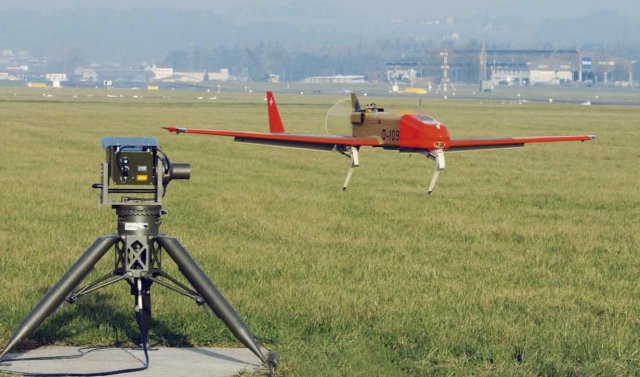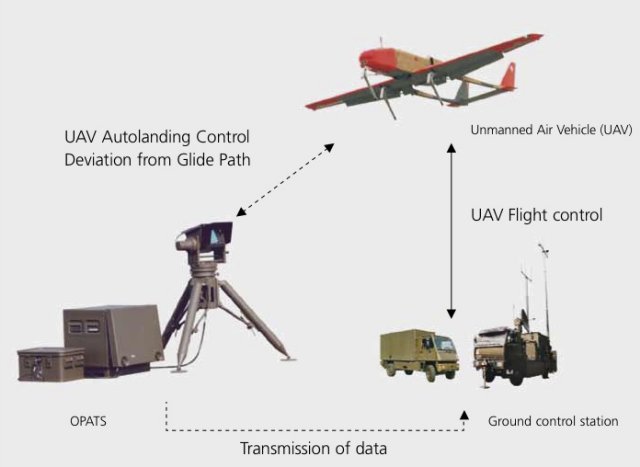Swiss company RUAG has developed OPATS (Object Position and Tracking Sensor) – a laser-based automatic landing system for UAS that represents a cost-efficient alternative to radar-based landing systems. The landing procedure for UAS is still a very delicate operation and the most critical phase during the entire UAS flight.
The key feature of the system OPATS is the continuous position measurement of the approaching unmanned aircraft by means of an eye-safe, OPATS system infrared laser beam which is echoed back from a passive and optionally heated retro reflector on the aircraft.
The measured position data is continuously transmitted to the Ground Control Station (GCS) processed and used to control the aircraft on its glide path via the data uplink to the aircraft.
RUAG developed the OPATS system for the Swiss Air Force. Experience with several thousand automatic landings have shown that OPATS is a reliable, precise, easy-to-operate and cost-effective system for UAS auto landing. It was demonstrated that a landing area of 20 m x 200 m for touchdown and full stop is sufficient. This performance was achieved in cold and hot areas, rain and snow, day and night.
RUAG has delivered more than 100 OPATS to different worldwide customers.
Source: RUAG



Why not just set up 2 or more cameras with baseline offset to track an IR beacon on the aircraft and triangulate its position that way? A laser rangefinder with a retro reflector seems a rather expensive way of doing this.
LaserTech Co. has developed a laser system for landing. The system includes two lasers that create a glissade space for a landing.
The laser system allows you to automate the entire landing process.
If you have an interest, then we could cooperate.
Tigran,
If you want to contact the company, then click on the link to RUAG in the article.
This will take you to their website
HI
I have interesting with your Laser-Based Automatic UAS Landing System.
I will be happy to get some more information about the sys, mainly about the accuracy of the sys.
Boaz,
If you want to contact the company, then click on the link to RUAG in the article.
This will take you to their website